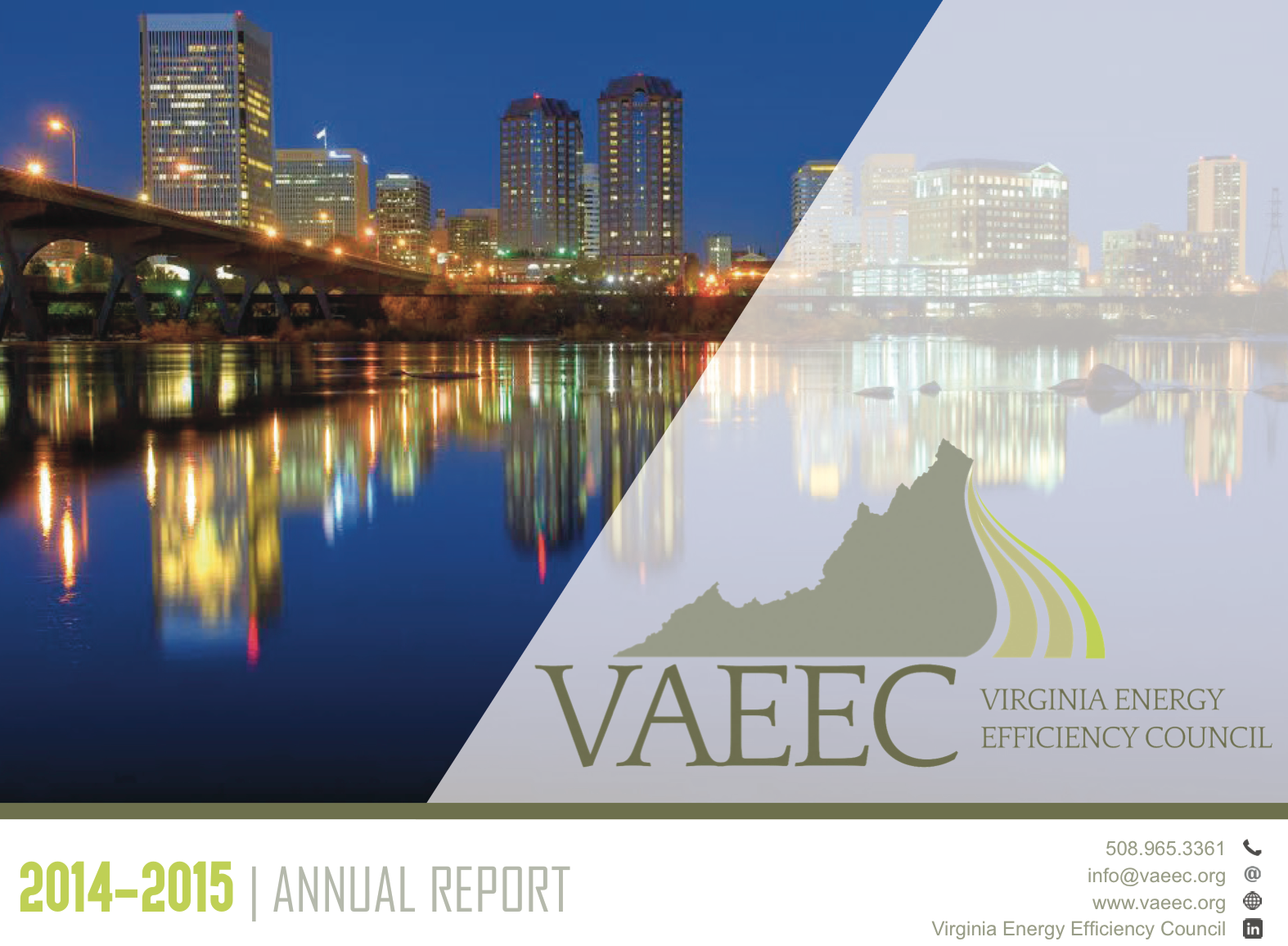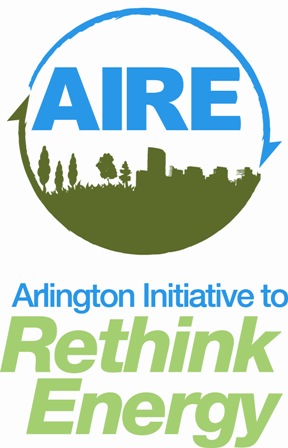 Guest Blogger: Abby Johnson, Abacus Property Solutions (VAEEC Member – Individual)
Guest Blogger: Abby Johnson, Abacus Property Solutions (VAEEC Member – Individual)
January 19, 2016
This year, Virginia Community Capital received a grant from the Oak Hill Fund to explore implementation of PACE financing in Virginia. As part of this grant, VCC held an initial stakeholder meeting on July 14, 2015 where attendees heard about the new PACE law that went into effect on July 1, 2015 as well as from guest speakers from other states. On December 8th, Virginia Community Capital (“VCC”) held the final Virginia PACE Financing stakeholder meeting at the Trane facility in Ashland. At this meeting, the Department of Mines, Minerals and Energy (DMME) gave an overview of the new PACE financial underwriting guidelines that went to effect December 1, 2015 and Rich Dooley, of Arlington County gave an update on Arlington’s plans to issue an RFP for a program administrator. Then I joined Neal Barber of Community Futures to present the findings from our grant research. Afterwards, attendees broke out into groups to discuss these recommendations and offer their insights.
As a seasoned executive within state and local governments for 40 years, Neal was selected to interview local elected officials and staff from across Virginia. During the fall, Neal met or spoke with 35 jurisdictions to gauge the level of knowledge and interest in participating in a PACE financing program. For the most part, his research revealed that few jurisdictions were currently aware of PACE with the exception of those with dedicated sustainability officials. Although there was definitely interest in the concept of PACE as an economic development tool, top conclusions from these interviews revealed that there is a:
- Need for significant education to different parts of a locality’s staff to explain how PACE would impact them
- Benefit to engaging a local champion to push PACE as a priority item within a locality
- Interest in a centralized “plug and play” program
- Preference for seeing how PACE is adopted in other jurisdictions before taking the proverbial plunge.
Given my deep knowledge of PACE programs around the country and extensive work in Virginia, I was asked to analyze national best practices and develop an initial set of recommendations for our state. Some highlights include:
- A minimum annual project volume of $10-20 million is needed to sustain a PACE program, assuming upfront ongoing administration fees are the primary source of funding for the administrator.
- Most successful programs have or had internal funding or financing structures such as the Green Bank in Connecticut.
- Successful programs tend to be located in areas with high utility rates, robust incentive structures, and/or higher energy usage such as California and Connecticut.
- The cost to develop (set-up and implementation) a PACE program is estimated to be $500K to $1 million for a full service program administrator.
- Although smaller projects (under $300k) represent a major source of deal flow, the costs to both the program administrator and the building owner are often prohibitively high and must be streamlined to be a viable product line.
- Education is key and must be a major budget item both to convince localities of the program’s value and to train key channel partners.
Although much more research is required to develop a detailed implementation plan, some initial recommendations include:
- Develop a P3 platform through alignment with a new or existing statewide entity with a standardized set of documents and procedures such as: model ordinance, underwriting criteria, and vetted contractors and capital providers. This state-level entity would partner with regional and local institutions to leverage existing relationships and marketing infrastructure.
- Prioritize two or three localities with the maximum potential for the first year.
- Identify creative ways (such as job creation/training grants) to provide the program administrator with funding that generates a healthy pipeline quickly.
Arlington County is forging ahead with developing a PACE program. This past week, Arlington held the first of several planned discussions on the benefits of PACE to local stakeholders – this one geared toward commercial real estate lenders. I, along with Arlington’s Rich Dooley, fielded many thoughtful questions during this lively discussion, demonstrating first hand the absolute importance of education when introducing a new product to the market.
Related Post: PACE is finally here in Virginia (June 2015)
January 2016
Dominion Virginia Power
Gold Level Member
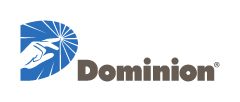
Dominion Virginia Power is a subsidiary of Dominion (NYSE: D), one of the nation’s largest producers and transporters of energy with operations in 14 states. Dominion Virginia Power offers 6 non-residential, and 7 residential programs that empower customers to manage their energy consumption, resulting in lower bills throughout the year. The company recently expanded its EnergyShare program to provide financial assistance, weatherization services and educational outreach to more qualifying customers, including people living with disabilities and military veterans facing financial hardships. As a regulated utility, Dominion regularly reviews and proposes new programs for approval to the State Corporation Commission (SCC). Currently under consideration by the SCC are a residential programmable thermostat program and a small business program.
To view the current list of programs and incentives for Dominion customers visit the Energy Conservation home page.
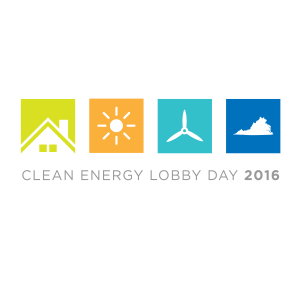 The VAEEC is teaming up with the Maryland, DC, Virginia Solar Energy Industries Association (MDV-SEIA) to host Clean Energy Lobby Day (CELD) 2016 on February 9.
The VAEEC is teaming up with the Maryland, DC, Virginia Solar Energy Industries Association (MDV-SEIA) to host Clean Energy Lobby Day (CELD) 2016 on February 9.
Our focus will be on bringing together the advanced energy businesses of Virginia with key legislators to advocate for clean technology bills in this upcoming legislative session.
Last year, more than 100 business representatives from Virginia’s solar, wind and energy efficiency industries achieved 60+ meetings with legislative offices.
You can download fact sheets on the bills VAEEC is supporting
here.
December 2015

“Optimizing Communications to Low-Income Utility Customers”
Starting this month, we’re modifying our approach to the Featured Member of the Month. In this space we’ll be sharing profiles of VAEEC members and their most innovative and relevant programs in an effort to foster more information sharing and knowledge building among our network. Thanks to Opower for being our “guinea pig” with this new approach and for sharing their story.
Finding ways to save energy and shrink utility bills can make a huge difference for low-income families across the U.S. struggling to make ends meet.
VAEEC member Opower – a company that helps utilities around the world reduce energy consumption and improve relationships with their customers – engages more than 500,000 low-income customers across the U.S. through targeted, personalized communications, empowering low-income families with the information they need to lower their bills.
There are often assumptions that low-income customers would have trouble reducing their energy usage because they have fewer appliances to turn off. Yet Opower has found that EE savings are on par with average customer savings. Further, low-income customers are even more likely than non-low-income customers to take equipment-based actions – things like insulating doors, installing efficient appliances/lighting, insulating attic, etc. — in response to Opower’s Home Energy Reports (HERs). These actions might be undertaken on their own or through weatherization programs that utilities and others offer. And low-income customers report higher rates of satisfaction with the HERs than average customers.
“Opower is committed to giving utilities tools to bring more value to their customers and their communities. There’s a great deal we can do to help low-income families by empowering them with insights that are tailored to their needs and provide practical ways they can reduce energy costs,” says Alex Laskey, Opower President and Co-Founder.
The lessons Opower has learned (and shared through various resources like the white papers which you can access below) in their outreach to low-income customers has huge implications.
“The U.S. Low Income Home Energy Assistance Program reaches fewer than 25% of eligible households, yet the needs of low-income families are growing. As funding from the American Recovery and Reinvestment Act (ARRA) and LIHEAP decrease or fades away completely, it is critical to help families maximize the value of every available dollar. Energy efficiency offers a promising opportunities to help low-income families manage their energy costs,” says Jim Kapsis, Opower’s Vice President of Global Policy & Regulatory Affairs.
You can download two of Opower’s white papers on this topic on their website:
Unlocking Energy Efficiency for Low-Income Utility Customers: Four Key Lessons from Real-World Program Experience
Beyond Weatherization: How Innovative Program Strategies Can Enhance Core Low-Income Programs
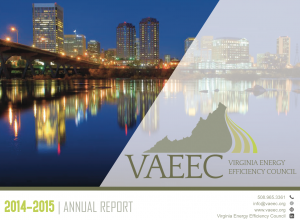 Download the full Annual Report.
Download the full Annual Report.
The 2014 – 2015 membership year saw the Virginia Energy Efficiency Council make great strides towards its goal of growing the energy efficiency industry in the Commonwealth. Not only did we initiate and facilitate successful conversations on policy and regulation, we were also very pleased to see some of our long-held recommendations implemented by Virginia’s new Governor in the updated Virginia Energy Plan.
One recommendation was for the formation of a stakeholder group to identify where we stood with respect to: our state’s voluntary energy efficiency goal, how it was going to be tracked, and what the plan
was to achieve it. The appointed Governor’s Executive Committee on Energy Efficiency is just the kind of stakeholder group needed, and we welcome its mandate to assist the state in meeting the voluntary goal through an actionable plan. Four of the VAEEC’s Governance Board Directors participate on the Committee, and other Directors participate in subcommittees to support the GEC’s work.
The VAEEC is also proud to have been part the state energy office’s winning proposal team on a Dept. of Energy State Energy Program grant. As a subrecipient on this award, we will support the GEC’s efforts as a convener, technical assistance provider, and sounding board for policies and implementation strategies.
Lastly, the VAEEC thanks its primary funder, the Energy Foundation for its continued support and guidance. We have leveraged its grant many times over through our partnerships, proposals, and programs – and are very grateful for the capacity it gives us.
Warm regards to our members and fellow energy efficiency supporters,
Cynthia Adams, VAEEC Governance Board Chair
CEO, Pearl National Home Certification
When the EPA Clean Power Plan rule was finalized this summer, they announced the Clean Energy Incentive Program (CEIP) which allows states to receive double credit for energy efficiency and renewable projects in low-income communities. The EPA is currently accepting comments on the CEIP through December 15, and the VAEEC encourages its members and stakeholders to submit comments.
To comment:
EPA invites you to provide written responses to the attached questions to the non-regulatory docket established for this purpose. EPA will accept input, identified by Docket ID Number EPA-HQ-OAR-2015-0734 through December 15, 2015. You may use one of the following methods:
· Go to www.regulations.gov and follow the on-line instructions for submitting comments.
· Send comments by e-mail to a-and-r-Docket@epa.gov.
· Fax your comments to: (202) 566-9744.
· Mail your comments to:
EPA Docket Center,
Environmental Protection Agency, Mail Code: 28221T
1200 Pennsylvania Ave., NW
Washington, DC 20460
Background:
Under the leadership of President Obama, EPA issued the Clean Power Plan, a historic step to fight climate change. The Clean Power Plan will reduce carbon pollution from power plants, the nation’s largest source, while maintaining energy reliability and affordability. EPA also issued final Carbon Pollution Standards for new, modified, and reconstructed power plants, and proposed a Federal Plan and model rules to assist states in implementing the Clean Power Plan.
We look forward to your participation and please extend this invite to your organization’s leadership. Information about the Clean Power Plan can be found here. Get more information about the Clean Energy Incentive Program here.
Questions to consider:
What should EPA consider when defining criteria, terms and requirements under the CEIP?
· What definition(s) of ‘low-income community’ should be required for eligible energy-efficiency (EE) projects?
· What criteria should be used to define eligible wind and solar projects, as well as eligible EE projects implemented in low-income communities? (e.g., by sector (residential, commercial, etc.) or by geography (where a project takes place and who benefits from it))
· What should be the evaluation, measurement and & verification (EM&V) requirements for eligible projects; the requirements for M&V reports of quantified megawatt-hour (MWh); and the requirements for verification reports from an independent verifier?
· How could EPA set criteria for states, tribes and territories for whom goals have not yet been established in the final Clean Power Plan’s Emission Guidelines (EGs) to participate in the CEIP?
The following three questions have been posed by stakeholders:
· What commencement date is appropriate for a project to qualify as eligible for the CEIP?
· How should ‘commence construction’ of an eligible wind or solar project and ‘commence operations’ of an eligible low-income EE project be defined?
· Should CEIP allowances or emission reduction credits (ERCs) be available for projects in jurisdictions without affected entities (e.g. tribal lands and states without EGUs). If so how should the CEIP mechanism be designed to address these areas?
What should EPA consider regarding the timing and distribution of allowances under the CEIP?
· How should the 300 million short ton CO2 emissions-equivalent matching pool be allocated among states participating in the CEIP?
· How should the 300 million short ton matching pool be split between the two reserves: one for wind/solar, one for low-income EE?
· When should EPA allocate matching allowances or emission reduction credits (ERCs) to a state, and when should awards from these allocations be made to eligible project providers?
· How should matching allowances or ERCs that are allocated to a state but not awarded to eligible projects be redistributed among other states with unmet demand for matching allowances or ERCs, and when should this redistribution take place?
What should EPA consider when designing the mechanics of the CEIP?
· What are the appropriate mechanisms a state (in the case of a state plan) or EPA (in the case of a federal plan) should use to review project submittals and issue early action allowances or ERCs?
· How should the 300 million short ton CO2 emissions-equivalent matching pool be converted into ERCs, which are based on MWh?
· What mechanisms should EPA consider for maintaining the stringency of rate-based emission standards during the compliance periods to account for the issuance of early action ERCs for MWh generated or avoided in 2020 and/or 2021?
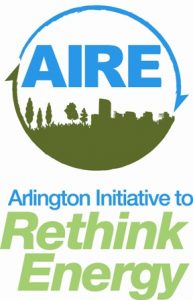 Arlington County government joined VAEEC in 2014. The Arlington Initiative to Rethink Energy (AIRE) helps our community make smart decisions about energy and supports individual actions that improve and sustain Arlington’s quality of life. Through rethinking energy, we are committed to energy practices that will make Arlington County a more prosperous, healthful, safe and secure place to live, work and play. Come join us.
Arlington County government joined VAEEC in 2014. The Arlington Initiative to Rethink Energy (AIRE) helps our community make smart decisions about energy and supports individual actions that improve and sustain Arlington’s quality of life. Through rethinking energy, we are committed to energy practices that will make Arlington County a more prosperous, healthful, safe and secure place to live, work and play. Come join us.
October 27, 2015 — The VAEEC is pleased to welcome Chelsea Harnish as Executive Director. She takes the helm on November 2. Members and other stakeholders are invited to meet Chelsea at the VAEEC meeting on November 12.
Chelsea brings an extensive network of contacts working on clean energy and energy efficiency in the Commonwealth, a rich history of engaging with state agency staff, industry and utility representatives, and a decade’s experience in energy policy and the nonprofit sector.
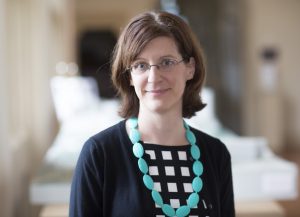 She comes to the VAEEC from the Virginia Conservation Network where she helped partners working on climate and energy issues strategically plan their approaches to achieving their collective goals. She also served as the Virginia Policy Coordinator for the Chesapeake Climate Action Network and played a variety of roles with a small nonprofit on Cape Cod in Massachusetts advocating for the Cape Wind project, America’s first announced offshore wind project.
She comes to the VAEEC from the Virginia Conservation Network where she helped partners working on climate and energy issues strategically plan their approaches to achieving their collective goals. She also served as the Virginia Policy Coordinator for the Chesapeake Climate Action Network and played a variety of roles with a small nonprofit on Cape Cod in Massachusetts advocating for the Cape Wind project, America’s first announced offshore wind project.
“I look forward to continuing to work in the energy sector in this new capacity,” said Chelsea. “Energy efficiency is a vital component to energy policy discussions and the Virginia Energy Efficiency Council plays a crucial role in supporting programs and policies that advance energy efficiency in Virginia.”
“As Virginia develops plans for federal Clean Power Plan compliance and meeting the state’s voluntary energy efficiency goal, the energy efficiency industry is poised to take center stage. It’s a crucial moment for the businesses, local and state government, and utilities we represent. Chelsea has the experience and expertise to position the VAEEC and its members at the forefront of this opportunity,” said Cynthia Adams, VAEEC Governance Board Chair.
We’re back with another installment of our popular biannual VAEEC meetings, offering you the opportunity to network with other leaders in the energy efficiency field, get informed and timely updates on issues critical to the industry in the Commonwealth, and help chart the course for the VAEEC.
Working Agenda:
10:15 Welcome and Introduction of new Executive Director (Cynthia Adams, VAEEC Governance Board Chair)
10:25 Report from Governor’s Executive Committee on Energy Efficiency (Hayes Framme, Chief Energy Efficiency Officer)
10:45 Update on the Clean Power Plan (Mike Dowd, Department of Environmental Quality)
11:05 The Impact of Recent Election Results for Virginia’s Energy Future (Invited: Political Commentator Dr. Bob Holsworth)
11:35 Member Spotlight (John Morrill, Arlington County)
12:00 Lunch
12:30 Innovation from Outside the State (Marisa Uchin, Opower)
12:50 Briefing on American Council for an Energy Efficient Economy’s State Scorecard (Mary Shoemaker, ACEEE)
1:05 “Lightning Round” (Utility representatives)
1:25 Commercial PACE and the VA Saves Green Community Loan Program (Bill Greenleaf, Virginia Community Capital)
1:45 Discussion: How will VAEEC Participate in Governor’s Executive Committee Process?
1:55 Wrap up
Register Now!
Lunch will be served, courtesy of our sponsor Community Housing Partners.
Please note the Branch Museum of Architecture and Design in Richmond is a different location than recent meetings. The meeting space is generously sponsored by D&R International.
The meeting is free and open to all. Non-VAEEC members are asked to make a small donation. We encourage you to invite friends and colleagues.
Please feel free to contact us with any questions about the meeting, and we look forward to seeing you on November 12.
The emissions scandal at Volkswagen was the latest instance in the auto industry’s long history of skirting safety or environmental rules, with regulators now vowing to establish more stringent tests.
Makers of consumer appliances and electronics have gone down a similar path, but tight federal standards and frequent testing have made it harder for manufacturers to skirt the rules.
Still, consumer groups and advocates said regulators must remain vigilant because the pace of technological change and innovation often exceeds the speed at which federal standards can be established. Common household items are packed with more electronics than ever, adding lots of features, but also providing the possibility of deceit.
Last week, for instance, Samsung denied that some of its high-definition televisions used less energy during testing conditions than in real-life use. This came after a European Union-financed laboratory raised questions about whether a feature known as “motion lighting” was intended to game energy efficiency tests.
Samsung said the technology, which dimmed the screen’s brightness in some circumstances, was an “out-of-the-box feature” that remained turned on whether at home or during tests. The feature “is not a test-cheat” and helps save energy, the company said in a statement posted online.
Read the full story. (The New York Times)
 Guest Blogger: Abby Johnson, Abacus Property Solutions (VAEEC Member – Individual)
Guest Blogger: Abby Johnson, Abacus Property Solutions (VAEEC Member – Individual)


 The VAEEC is teaming up with the Maryland, DC, Virginia Solar Energy Industries Association (MDV-SEIA) to host Clean Energy Lobby Day (CELD) 2016 on February 9.
The VAEEC is teaming up with the Maryland, DC, Virginia Solar Energy Industries Association (MDV-SEIA) to host Clean Energy Lobby Day (CELD) 2016 on February 9.
